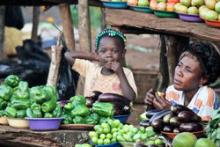
Quality, child-friendly policies set the stage for the delivery of quality services to children. Often, young children who are the most vulnerable are overlooked in programmatic and policy responses. Policies that recognize the vulnerability of young children and create an environment that enables their caregivers to access necessary support are essential. This course explores considerations for policymakers and how to create policies that support programming for young vulnerable children and their caregivers. It also examines ways in which programs can influence the political environment by conducting thorough stakeholder analyses, providing policymakers with sound data on child development outcomes, and highlighting strategies for reducing the vulnerabilities of young children and their caregivers.
Objective
By the end of this course, learners will be able to:
- Explain why investment in ECD for vulnerable populations is important
- List ways in which policy can support children and caregivers to access critical services
- Explore through case studies examples of ways in which policies can mitigate vulnerabilities
- Understand ways in which programs can impact policy for the benefit of young vulnerable children and their caregivers
- Describe how to conduct a stakeholder analysis in order to influence policy change and improve the enabling environment for young vulnerable children and their caregivers
Credits
- Colleen Farrell, Save the Children
- Maury Mendenhall, USAID
- Pablo Stansbery, Save the Children
Time
- 2 hours 45 minutes
Published/Updated
- Saturday, September 7, 2013
Course Authors:
Kendra Blackett-Dibinga, Save the Children
Course Managers:
- Lisa Mwaikambo, CCP
